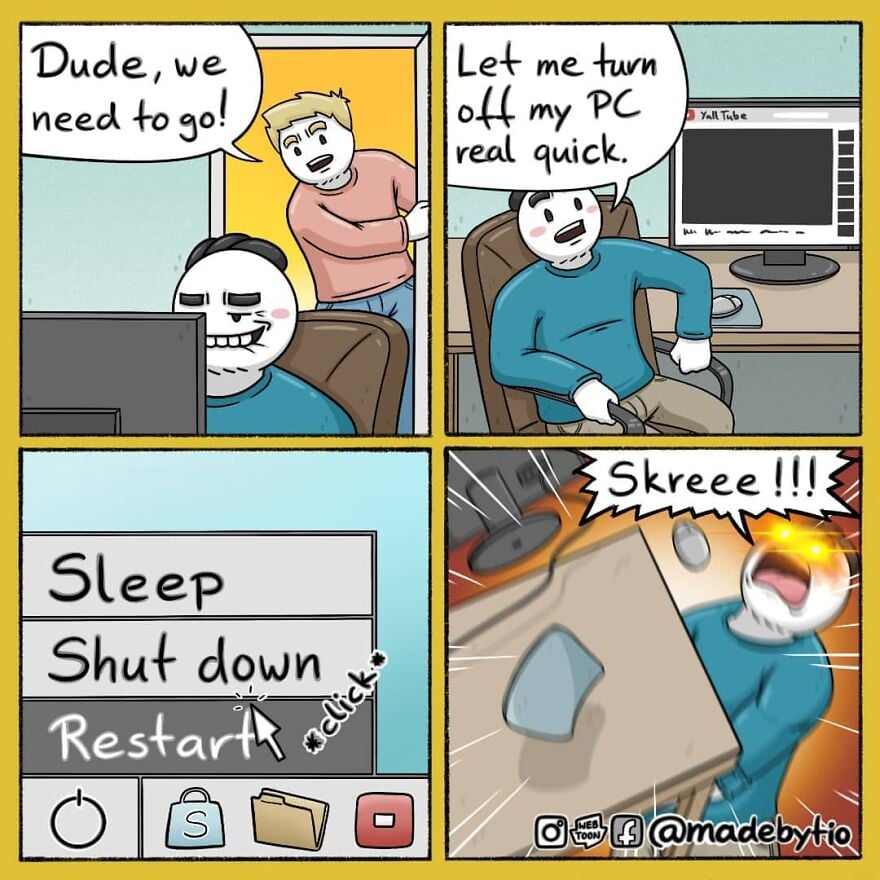this post was submitted on 12 Feb 2025
367 points (95.8% liked)
Comic Strips
13821 readers
1801 users here now
Comic Strips is a community for those who love comic stories.
The rules are simple:
- The post can be a single image, an image gallery, or a link to a specific comic hosted on another site (the author's website, for instance).
- The comic must be a complete story.
- If it is an external link, it must be to a specific story, not to the root of the site.
- You may post comics from others or your own.
- If you are posting a comic of your own, a maximum of one per week is allowed (I know, your comics are great, but this rule helps avoid spam).
- The comic can be in any language, but if it's not in English, OP must include an English translation in the post's 'body' field (note: you don't need to select a specific language when posting a comic).
- Politeness.
- Adult content is not allowed. This community aims to be fun for people of all ages.
Web of links
- [email protected]: "I use Arch btw"
- [email protected]: memes (you don't say!)
founded 2 years ago
MODERATORS
you are viewing a single comment's thread
view the rest of the comments
view the rest of the comments

I mean, a beefy GPU could be ~400W, and a beefy CPU another ~200W. But that's peak draw from those components, which are designed to drastically reduce power consumption if they aren't actually under load. You don't have to power down the components in sleep/hibernation to achieve that -- they can already reduce runtime power themselves. One shouldn't normally have software significantly loading those (especially after a reboot). If you've got something that is doing crunching in idle time to that degree, like, I don't know, SETI@Home or something, then you probably don't want it shut off.
The reason fans can "spin up" on the CPU and the GPU when they're under load is because they're dissipating much more heat, which is because they're drawing much more power.